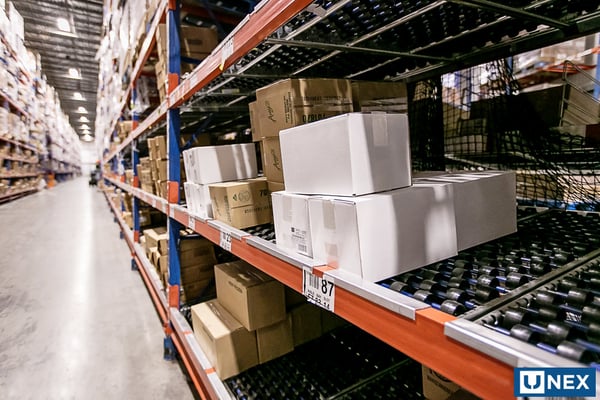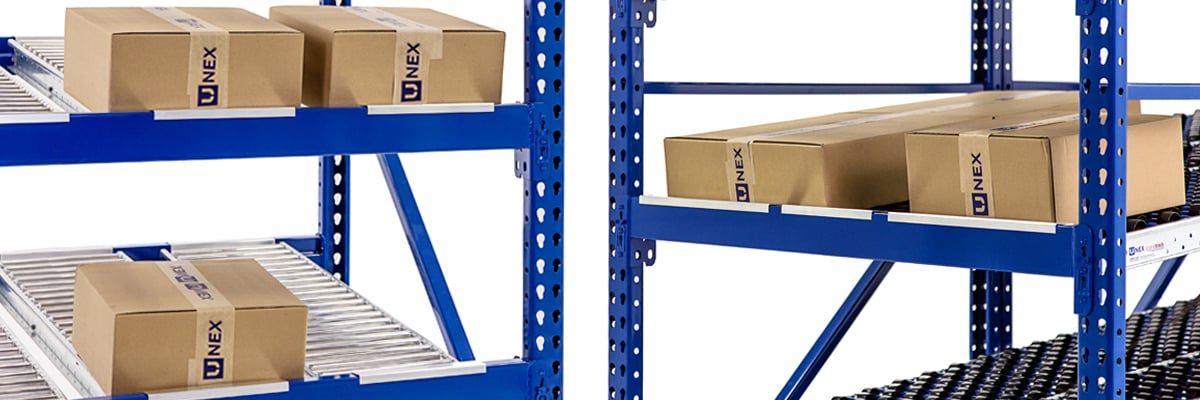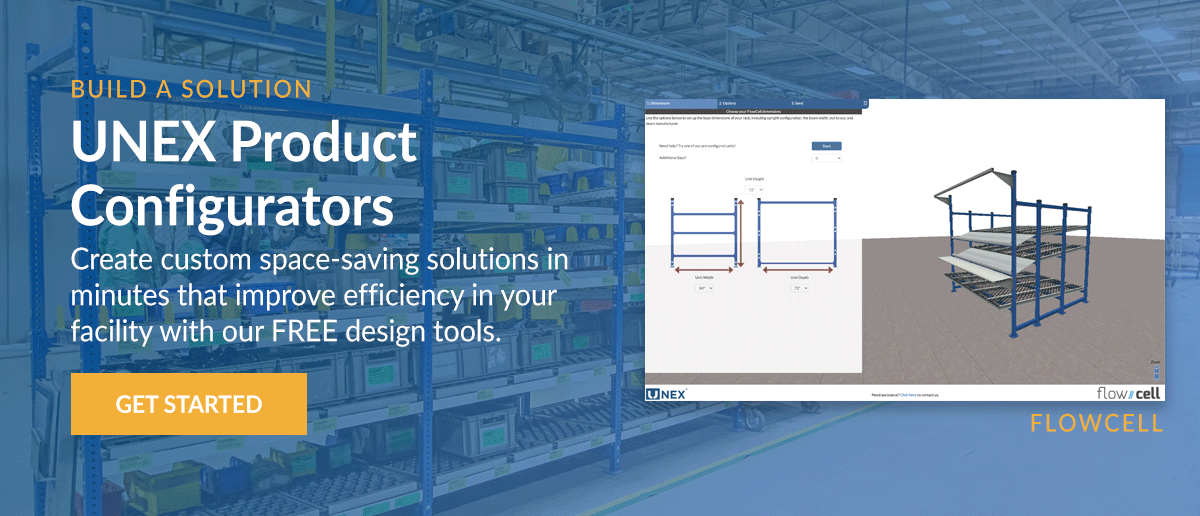How to Combat Supply Chain Disruption In 2022

With industry experts calling for yet another year of supply chain disruptions, managers of fulfillment operations are working to find solutions to address a myriad of challenges. Major demand increases combined with labor shortages have made it difficult to keep pace, and the new year is likely to bring even more of the same. So, how can fulfillment operations offset the negative impacts of this continuing trend? Let’s examine the top disruptors impacting fulfillment operations today and review the best way to start tackling them through space optimization!
Supply Chain Disruption Challenges for Fulfillment Operations
Labor shortages
Most fulfillment operations have been impacted over the past few years by shortages of skilled workers. The COVID-19 pandemic and economic shifts have only grown this shortage. Difficulty securing skilled talent, combined with increasing wages, means controlling costs and maintaining efficiency has never been more crucial.
Keeping pace despite labor challenges means fulfillment operations must find creative new ways to offset labor cost increases to remain profitable.
Increased consumer expectations
Over the past decade, major online retailers and food, grocery, and meal kit companies have conditioned consumers to expect lightning-quick delivery. As a result, the ability to track order progress from cart to doorstep is a prerequisite for many customers. Further, with more specialization and customization of products being offered by companies, there are more SKUs to store, pick, pack, and ship.
These heightened consumer expectations mean that companies with omnichannel fulfillment strategies must constantly rethink their fulfillment processes to stay relevant and competitive. There are new ways to get even more SKUs into the same footprint and better solutions for maximizing space, leading to a plethora of gains throughout fulfillment operations. Leveraging purpose-built equipment for a facility can give fulfillment operations the efficiency boost needed to maintain their edge.
Increased eCommerce demand
eCommerce demand was already increasing prior to the pandemic, and now, the pandemic has only added fuel to that fire. Spikes in demand for specific industries such as grocery, meal kits, sporting goods (think at-home workout equipment for your pandemic home gym), and home improvement contribute to greater order volume moving through supply chains.
To keep pace, fulfillment operations need to find ways to create efficiency across multiple channels, facilities, and operation areas such as storage, order picking, packing, staging, shipping, and delivery or in-store pickup.
Space constraints
Increased demand + more choices = more SKUs, which means fulfillment operations are struggling to find space for storing higher inventory counts and increasing SKU variations.
The pandemic has re-shaped how we operate - new health and safety measures are at play, such as masks, vaccine mandates, and social distancing, all of which impact how we do business across the board, and fulfillment operations are one of the most heavily impacted industries.
How can fulfillment operations react to these disruptions?
Focus on space optimization! Here are 2 space-saving best practices you should do right now to prepare for another year of supply chain disruptions:
1: Understand the flow of your current layout
Whether your storage footprint is a full-size warehouse, a micro-fulfillment center, retail backroom, or customer pickup area, getting a good handle on how you're currently operating will help identify areas where improvements will make the biggest impact.
Are you storing like items near one another? Are your order picking, packing, staging, and shipping operations situated relatively close to one another? Do processes flow naturally and seamlessly from one stage of the order fulfillment process to the next? Answers to these questions can help you determine whether the flow of your current layout meets your needs.
Implementing a carton flow solution like SpanTrack in the order picking areas of your operation can be a great first step to optimizing flow throughout the rest of your facility. The space-saving benefits of SpanTrack will not only alleviate growing pains related to your physical footprint, it will also reduce labor costs by shortening pick paths and enabling more efficient FIFO stock rotation. With either dedicated roller lanes or universal wheel beds, your fulfillment operations can boost throughput by up to 150%. And, the ability to handle up to 100 lbs per foot means SpanTrack is robust enough for just about any fulfillment application.

2: Re-slot inventory to utilize all available space
When re-slotting inventory, it makes sense to first examine your picks. On average, 80% of the throughput in your facility will come from 20% of your SKUs. This is commonly referred to as the Pareto Principle. The Pareto Principle states that, for many scenarios, approximately 80% of the effects come from 20% of the causes. When you apply this basic idea to an order fulfillment operation, on average, 80% of your throughput comes from 20% of your SKUs. This 20% will be your fastest-moving SKUs, and they are best left on pallets to avoid double handling.
When picking from pallets, a pallet flow solution like Pallet Track provides 2-deep pallet storage lanes, creating an ideal FIFO storage system. Instead of storing two pallets per bay, now you're storing four, with optimized flow from back to front for easy, seamless order picking. This makes a huge difference in terms of space savings and overall operational efficiency!
Continuing with the Pareto’s Principle concept, the remaining 80% of your SKUs will be your medium to slowest movers.
Your medium-throughput SKUs are ideally stored on carton flow. You can utilize a solution like SpanTrack in several ways to create carton flow SKU storage.
- SpanTrack Lane or Wheel Beds can be dropped directly into existing pallet rack structures to create carton flow bays.
- If pallet racking is not an option in your space, you can utilize standalone carton flow racks like Roller Rack.
- For even greater flexibility, a solution like FlowCell may be of interest. Due to its reconfigurability, it can be utilized across several areas of your facility and can easily be repurposed as needed.
Your low throughput or slowest moving SKUs are best suited for a high-density storage system such as SpeedCell. This dynamic solution integrates directly into pallet racking to create highly organized, space-efficient SKU storage. By increasing your storage density by up to 60%, SpeedCell can reduce labor costs by a whopping 40% due to easier, more ergonomic access to SKUs. Each cell can handle up to 35lbs, and each column has a 240lb capacity. And, working temperatures from -20° to 180° mean you can benefit from SpeedCell just about anywhere.
Following this basic principle and re-slotting your inventory accordingly can be a relatively simple way to increase space utilization in your operation. If you’re just getting started, we recommend giving this methodology a try!
Gain a competitive edge in 2022 with UNEX
2022 is practically here, and it’s certain to be another big year for the fulfillment industry. If your top priority is taking advantage of increased demand despite facing numerous challenges, UNEX has the solutions to make it possible. Through improved storage, picking, packing, staging, and shipping space efficiency, UNEX can give you the competitive edge you need. Contact us today to learn more!





